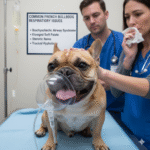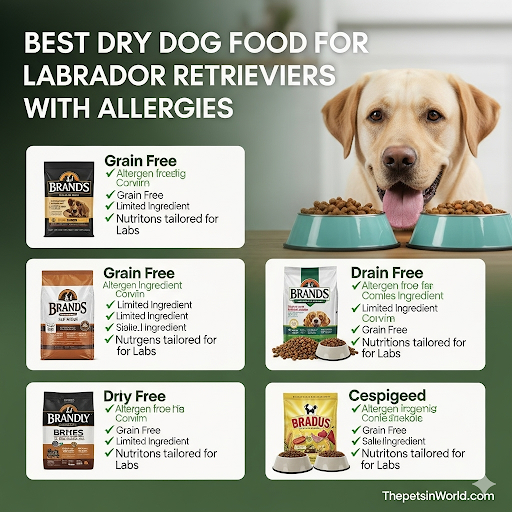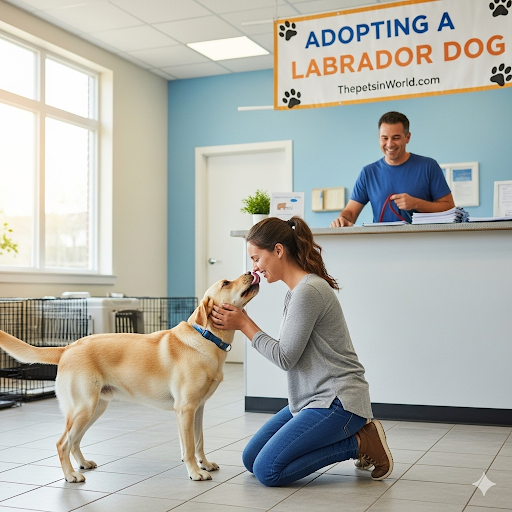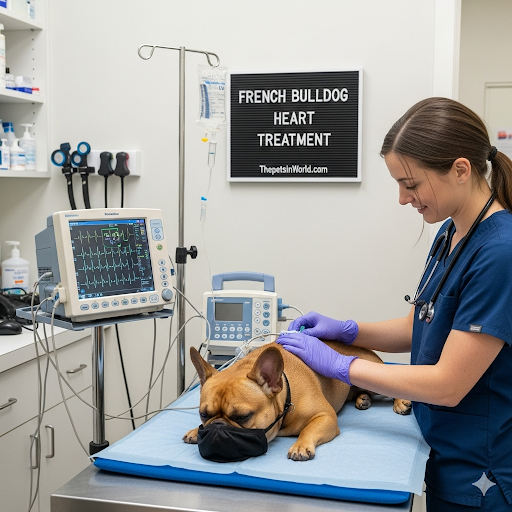Senior Labrador Health Issues| How to Care for an Aging Dog
📄 Quick Bio Table
| Trait | Particulars |
|---|---|
| 🐶 Breed Title | Labrador Retriever |
| 🌍 Origin | Newfoundland, Canada |
| 📏 Common Peak | 21.5 to 24.5 inches (55–62 cm) |
| ⚖️ Common Weight | 55–80 kilos (25–36 kg) |
| 🧬 Lifespan | 10 to 12 years |
| 💖 Temperament | Pleasant, Mild, Clever |
| 🥺 Good with Youngsters | Sure |
| 🚶 Train Wants | Excessive (1–2 hours every day) |
| 🧼 Grooming Wants | Reasonable |
| 🔬 Frequent Well being Points | Weight problems, Hip Dysplasia, Ear Infections, PRA |
🧀 1. Hip and Elbow Dysplasia

Hip and elbow dysplasia are frequent orthopedic situations in Labrador Retrievers. These genetic issues happen when the hip or elbow joint does not develop correctly, resulting in joint instability, irritation, and ultimately arthritis. Affected canines could present indicators of discomfort similar to limping, stiffness, and issue rising, particularly after relaxation or vigorous train. Although these situations are inherited, their severity may be influenced by weight loss program, weight, and exercise ranges.
To handle or forestall these situations, common vet checkups, weight administration, and joint dietary supplements like glucosamine and chondroitin are really helpful. In extreme instances, surgical intervention could also be mandatory. Making certain your Lab doesn’t develop too rapidly as a pet and sustaining a wholesome way of life can vastly scale back the chance of joint issues later in life.
⚖️ 2. Weight problems
Weight problems is without doubt one of the most prevalent well being points dealing with Labrador Retrievers as we speak. Labs are recognized for his or her hearty appetites and may simply grow to be obese if not monitored carefully. Weight problems not solely limits a canine’s mobility but additionally considerably will increase the chance of diabetes, coronary heart illness, and joint issues.
House owners have to be vigilant with portion management, keep away from overfeeding, and guarantee their Labrador will get every day train. Switching to a high-quality, balanced weight loss program and limiting treats could make an enormous distinction. Common weight checks and physique situation scoring can assist catch weight acquire early. Labs are energetic canines by nature, so participating them in lively play like swimming or fetch not solely helps them keep match but additionally strengthens the bond with their house owners.
🌊 3. Ear Infections
Labrador Retrievers have floppy ears that may lure moisture, making them susceptible to ear infections. These infections may be bacterial, fungal, or yeast-related and are sometimes brought on by water buildup after swimming or insufficient cleansing. Signs embody head shaking, scratching, foul odor, and discharge.
Continual ear infections can result in listening to loss and chronic discomfort. Preventive care is essential: clear your Lab’s ears weekly utilizing vet-approved options, and at all times dry their ears totally after water actions. If indicators of an infection come up, seek the advice of a vet promptly for therapy. By sustaining a daily ear care routine, you may assist your Lab keep away from recurring points and guarantee their ears keep clear and wholesome.
👁️ 4. Progressive Retinal Atrophy (PRA)

Progressive Retinal Atrophy (PRA) is a gaggle of inherited eye ailments that trigger the retina to regularly degenerate, resulting in imaginative and prescient loss and ultimately blindness. Labrador Retrievers are genetically predisposed to PRA, making it important for breeders to display screen canines earlier than breeding.
The primary indicators of PRA typically embody issue seeing in low mild or reluctance to go outdoors at night time. Over time, the situation worsens, though it’s painless. There’s at the moment no remedy for PRA, however early detection can assist house owners adapt their houses and routines to assist their canine’s altering wants. Genetic testing for breeding Labs can assist scale back the incidence of this illness in future generations.
🧠 5. Train-Induced Collapse (EIC)
Train-Induced Collapse (EIC) is a genetic dysfunction seen in some younger Labrador Retrievers, usually between 5 months and three years outdated. Canine with EIC could seem regular however immediately lose management of their hind legs after intense train. These episodes may be scary however are normally not painful.
Most affected canines recuperate with relaxation inside minutes. Nevertheless, continued exertion throughout an episode may be harmful. A DNA take a look at is obtainable to establish carriers, and canines identified with EIC ought to keep away from strenuous exercise. Common, average train and cautious commentary are key to managing this situation. EIC doesn’t have an effect on a canine’s life expectancy if exercise is correctly managed.
🧃 6. Bloat (Gastric Dilatation-Volvulus)
Bloat, or Gastric Dilatation-Volvulus (GDV), is a life-threatening emergency that may have an effect on deep-chested breeds just like the Labrador Retriever. It happens when the abdomen fills with gasoline and twists, slicing off blood provide and inflicting fast deterioration. Indicators embody a swollen stomach, unproductive retching, restlessness, and fast respiration.
Quick veterinary care is crucial—bloat may be deadly inside hours. Though the precise trigger is not absolutely recognized, feeding two smaller meals a day, avoiding vigorous train after consuming, and utilizing slow-feeder bowls could scale back danger. Some house owners go for a preventive surgical procedure referred to as gastropexy, particularly in Labs with a household historical past of GDV.
🥔 7. Dietary Well being
Correct vitamin performs an important position within the well being and longevity of your Labrador Retriever. A balanced weight loss program helps preserve a wholesome weight, helps joint well being, and boosts immunity. Labs thrive on high-quality pet food wealthy in protein, average in fats, and low in fillers. Dietary supplements like omega-3 fatty acids, glucosamine, and probiotics can assist coat well being, digestion, and joint operate.
Puppies want specifically formulated meals to assist development with out encouraging fast weight acquire. At all times comply with your vet’s dietary suggestions and keep away from feeding desk scraps, which may result in dietary imbalances and weight problems. Monitoring meals parts and selecting treats properly will assist your Lab’s total well-being.
🛃 8. Pores and skin and Coat Points
Whereas Labradors have a typically low-maintenance coat, they will nonetheless undergo from pores and skin issues like scorching spots, allergic reactions, and shedding. Seasonal shedding is regular, however extreme hair loss, itching, or redness could point out allergic reactions or parasites. Pores and skin points may also stem from meals sensitivities or environmental triggers similar to pollen or mud mites.
Common grooming, together with weekly brushing and occasional bathing with hypoallergenic shampoo, helps take away unfastened fur and retains the coat shiny. If persistent itching or irritation happens, a vet go to is required to rule out infections or underlying allergic reactions. A wholesome coat is usually a mirrored image of total well being and good vitamin.
💼 9. Senior Well being and Getting older

As Labradors enter their senior years (round age 7), they grow to be extra weak to arthritis, cognitive decline, and slower metabolism. Getting older canines could expertise stiffness, diminished power, and adjustments in urge for food or habits. It is vital to adapt their care by providing orthopedic bedding, mild train routines, and senior-formulated diets.
Common vet visits ought to embody bloodwork and dental exams to catch age-related ailments early. Cognitive dysfunction, just like dementia, may also have an effect on older Labs—search for indicators like confusion or disrupted sleep. With proactive care and love, senior Labradors can proceed to dwell comfortable, comfy lives nicely into their golden years.
📈 10. Preventive Care and Vet Checkups
Preventive well being care is the inspiration of a protracted, wholesome life in your Labrador Retriever. Annual veterinary checkups assist detect early indicators of illness and guarantee vaccinations are updated. Labs ought to be on year-round parasite prevention for fleas, ticks, and heartworms. Routine dental cleanings and weight monitoring are additionally important.
Focus on any adjustments in habits, urge for food, or power ranges together with your vet—these may be early indicators of sickness. Contemplate well being screening assessments similar to hip and elbow evaluations, PRA testing, and EIC DNA screening, particularly if you happen to plan to breed your Lab. Preventive care is an funding in your canine‘s future.
😊 Conclusion: Conserving Your Lab Wholesome and Comfortable
Labrador Retrievers are joyful, affectionate companions that deserve a lifetime of affection and care. Understanding their distinctive well being dangers and addressing them proactively will assist your canine dwell an extended, more healthy life.
From joint care and ear cleansing to correct vitamin and common vet visits, each effort counts. Be attentive, keep knowledgeable, and bathe your Lab with affection. In return, you will get pleasure from years of loyalty, laughter, and unconditional love out of your finest furry good friend.
FAQs
1. What are the most common wellbeing issues in Labradors?
Labrador Retrievers are inclined to a few hereditary and lifestyle-related wellbeing issues. The most common incorporate hip and elbow dysplasia, which influence their joints and versatility. Weight is moreover a visit concern due to their adore for nourishment. Eye conditions like dynamic retinal decay (PRA) and cataracts can create with age.
2. How can I anticipate weight in my Labrador?
Labradors have a common propensity to pick up weight effectively if not observed. Avoiding weight includes portion-controlled dinners, nourishing a adjusted eat less, and maintaining a strategic distance from as well numerous treats. Every day work out such as strolls, swimming, or recess is fundamental. Keeping your pooch dynamic and rationally fortified moreover anticipates boredom-related indulging. Standard weigh-ins offer assistance track advance and alter schedules if necessary.
3. Are Labradors at hazard for hereditary diseases?
Yes, Labradors can acquire a few hereditary conditions, particularly if not bred mindfully. Hip and elbow dysplasia, PRA (a type of eye infection), and exercise-induced collapse (EIC) are some of the notable acquired conditions. DNA testing and wellbeing screening of guardians can essentially diminish the hazard. When getting a Labrador puppy, continuously select legitimate breeders who perform hereditary testing. Normal vet care and checking are significant indeed in solid dogs.
4. How regularly ought to I take my Labrador to the vet for checkups?
Adult Labradors ought to visit the vet at slightest once a year for common wellness exams. Puppies may require more visit visits for immunizations and development checking. Senior Labradors (age 7 and up) advantage from bi-annual checkups to distinguish age-related wellbeing issues early. Schedule vet visits offer assistance keep up a immunization plan, screen weight, and capture wellbeing issues some time recently they compound. Preventive care is key to a long and solid Labrador life.










